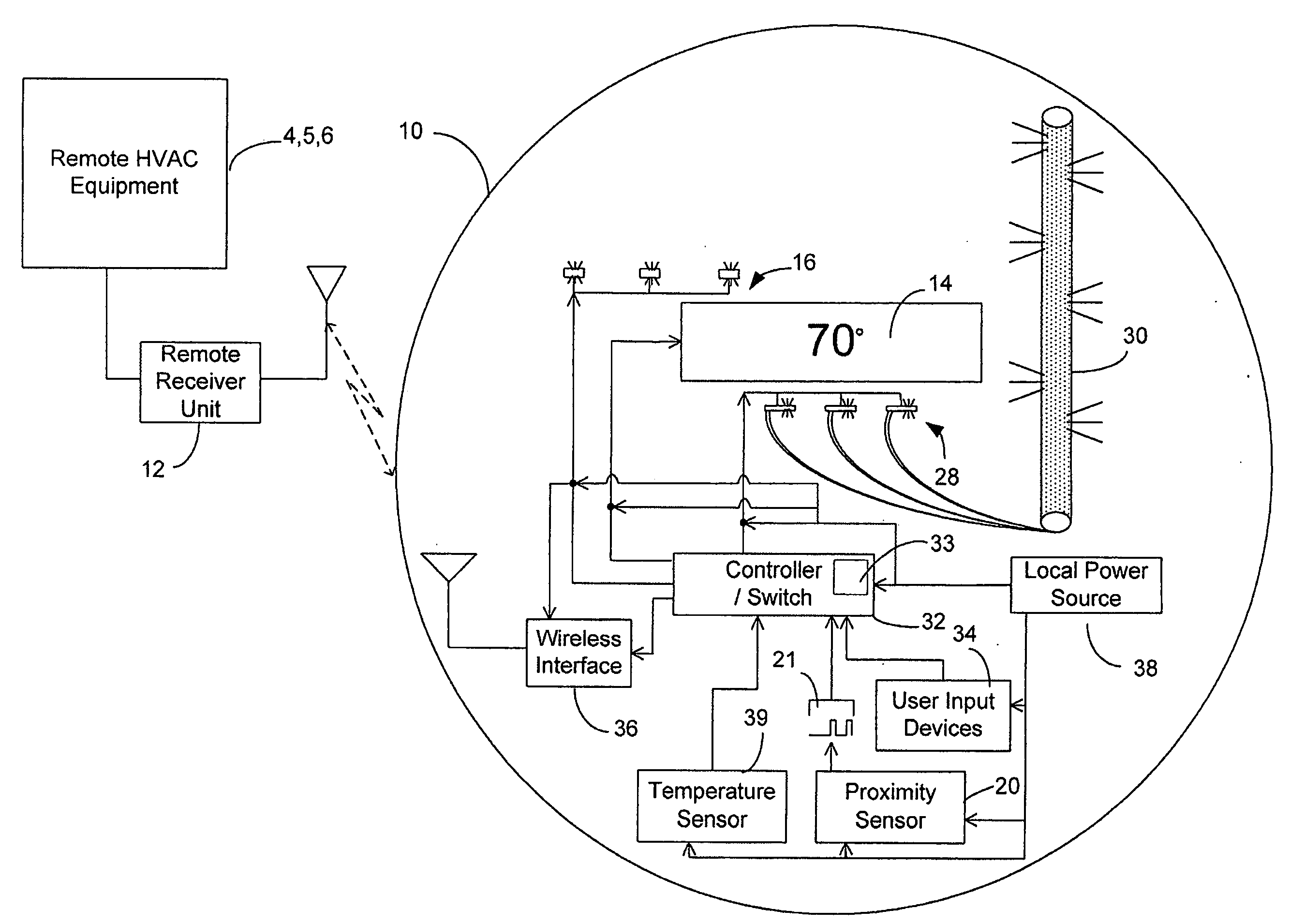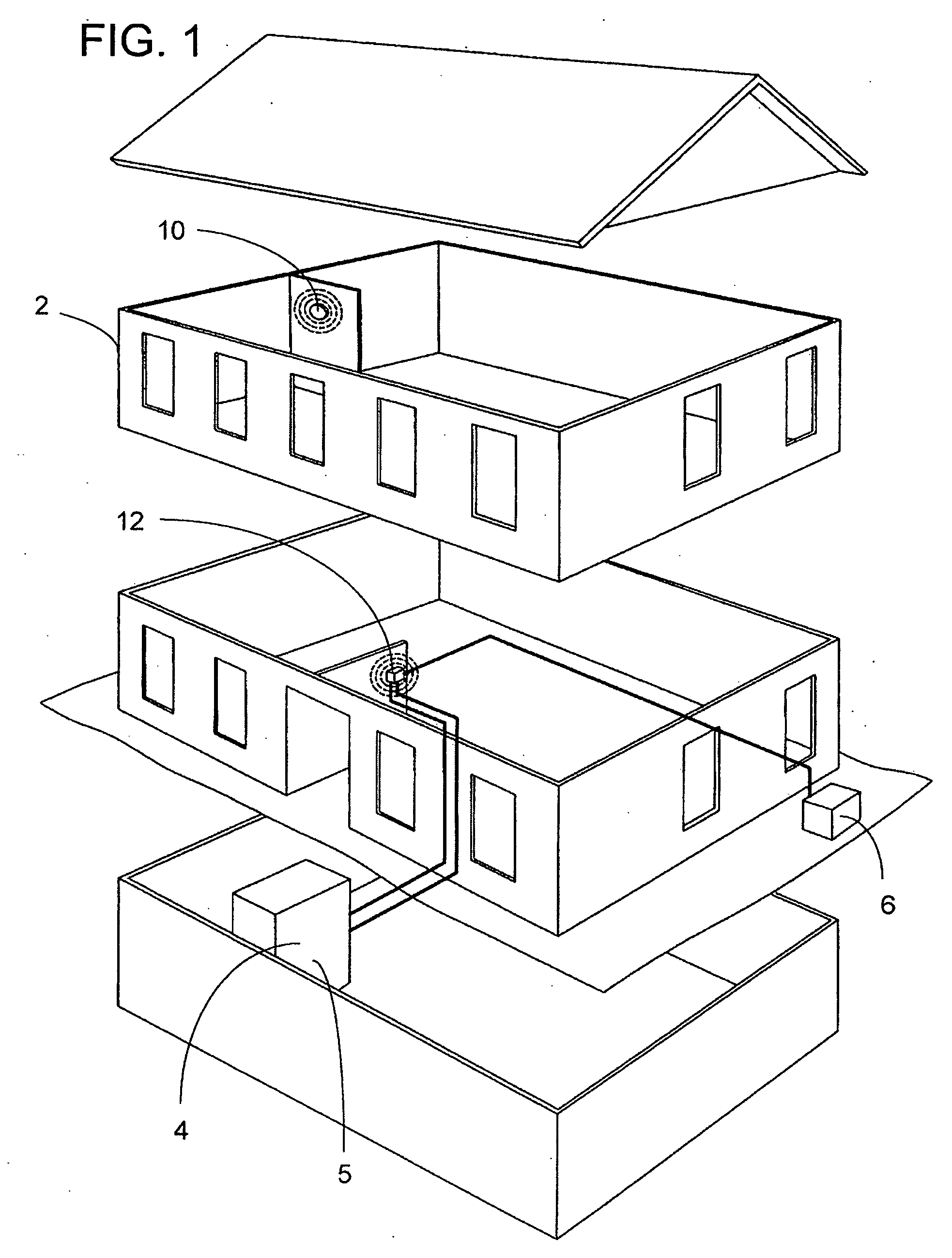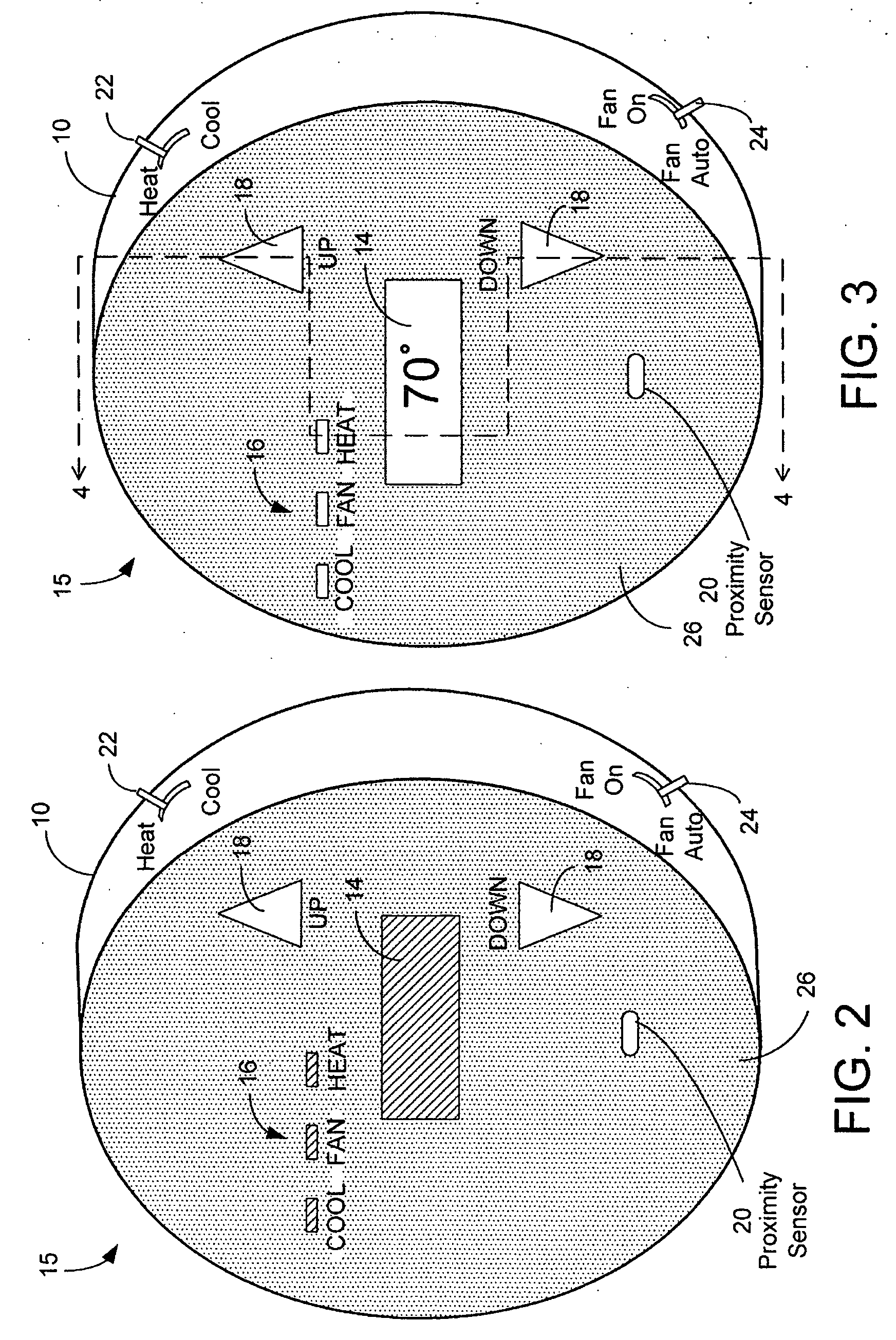Management of a thermostat's power consumption
a technology of thermostat and power consumption, which is applied in the direction of lighting and heating apparatus, heating types, instruments, etc., can solve the problems of affecting the operation and maintenance of the proper system, the limit of the possible locations of the conventional thermostat, and the inability to re-wire the existing building to relocate the thermostat, etc., to achieve the effect of reducing the energy consumption mode, and increasing the power consumption
- Summary
- Abstract
- Description
- Claims
- Application Information
AI Technical Summary
Benefits of technology
Problems solved by technology
Method used
Image
Examples
Embodiment Construction
[0025] A thermostat for controlling an operating state of an HVAC system is disclosed. The thermostat includes a user interface having one or more displays, a plurality of user input devices, such as buttons, sliders, or a touch screen, and a backlight. The user interface may be powered by an energy storage device, such as a battery, for example. In another embodiment, the user interface is powered by an energy source remote from the thermostat. For example, a line voltage source can be located at the remote HVAC equipment and can charge a battery or a storage capacitor in the thermostat. In an embodiment where the thermostat includes a proximity sensor, the user interface is controlled based on a user's presence near the thermostat. In this case, the thermostat further includes a controller, or a switch, for switching the user interface to an idle state, which includes removing power from the backlight and the displays when the proximity sensor indicates a lack of user proximity fo...
PUM
 Login to View More
Login to View More Abstract
Description
Claims
Application Information
 Login to View More
Login to View More - R&D
- Intellectual Property
- Life Sciences
- Materials
- Tech Scout
- Unparalleled Data Quality
- Higher Quality Content
- 60% Fewer Hallucinations
Browse by: Latest US Patents, China's latest patents, Technical Efficacy Thesaurus, Application Domain, Technology Topic, Popular Technical Reports.
© 2025 PatSnap. All rights reserved.Legal|Privacy policy|Modern Slavery Act Transparency Statement|Sitemap|About US| Contact US: help@patsnap.com



